--- 材料科学与工程学院-中文 ---
来源:Chemical Science

背景概述
刺激响应材料能够在环境条件(如光、温度、湿度、pH、电场、磁场、应力等)的细微扰动下表现出显著的性质变化。在诸多刺激性响应材料体系中,刺激性响应发光材料兼具灵敏度高、选择性强、非破坏性、检测可视化等优势,因而备受青睐。
有机–无机杂化金属卤化物 (hybrid organic–inorganic metal halides, HOMHs) 因存在弱的离子键、低的形成能、灵活多变的晶体结构以及多重激发态,其自组装体系在接触到各种外界刺激时容易引起光学性质的变化,因而成为一类理想的刺激响应发光材料中。
手性低维 HOMHs 结合了手性材料和低维 HOMHs 材料二者的优势,拓展了其在手性光电子学以及非线性光学等领域的应用。因此,得益于其 CPL 发射以及多刺激性响应行为,手性低维 HOMHs 为CPL 的智能调控以及多维度的刺激性响应材料的发展开辟了新的可能。
然而,目前人们对于兼具多刺激响应和 CPL发射的金属卤化物材料的相关研究仍不足,其潜在的应用价值仍值得探索。
图文导读
近日,南开大学徐加良研究员课题组采用阳离子自组装的策略,利用冠醚分子与有机手性胺阳离子之间的主-客体相互作用,成功锚定了手性配体,制备出一对具有多刺激性响应荧光发射行为的手性锑卤化物 R-/S-Sb。
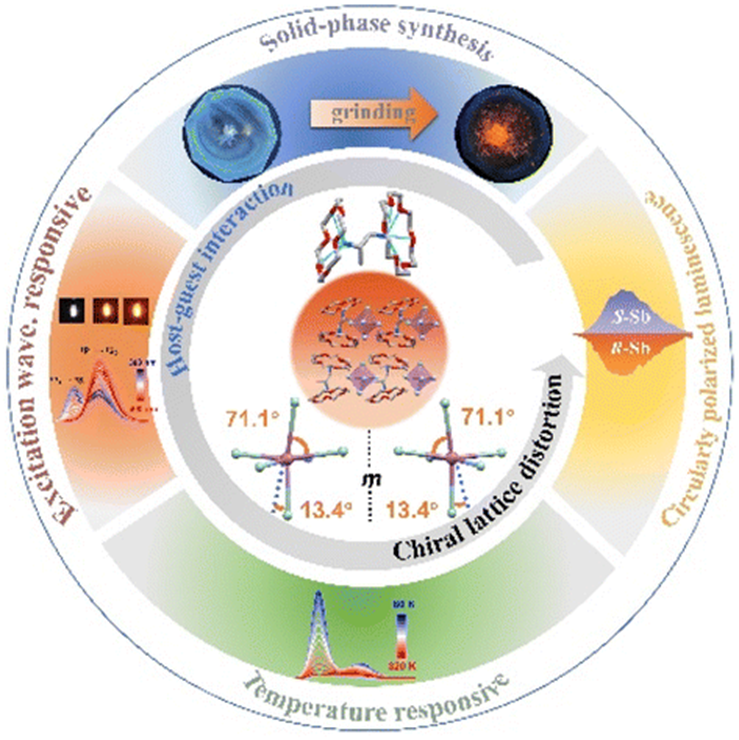
该工作中,冠醚分子与手性阳离子的自组装行为不仅提供了丰富的氢键网络,同时也有效地隔离了[SbCl6]3− 无机八面体,降低了非辐射复合,提升了 PL 效率【PLQY = 51.6%(白光)和87.2%(橙光)】。自组装后的 A 位阳离子在未破坏整体手性构型的前提下,通过非对称的氢键相互作用成功地把手性转移到无机骨架上,诱发了显著的晶格畸变,实现了高效的 CPL 发射 (|glum| ≥ 5.2 × 10−3)。该材料对激发波长以及环境温度表现出灵敏的响应,可实现由蓝光—黄白光—橙光的可逆切换。
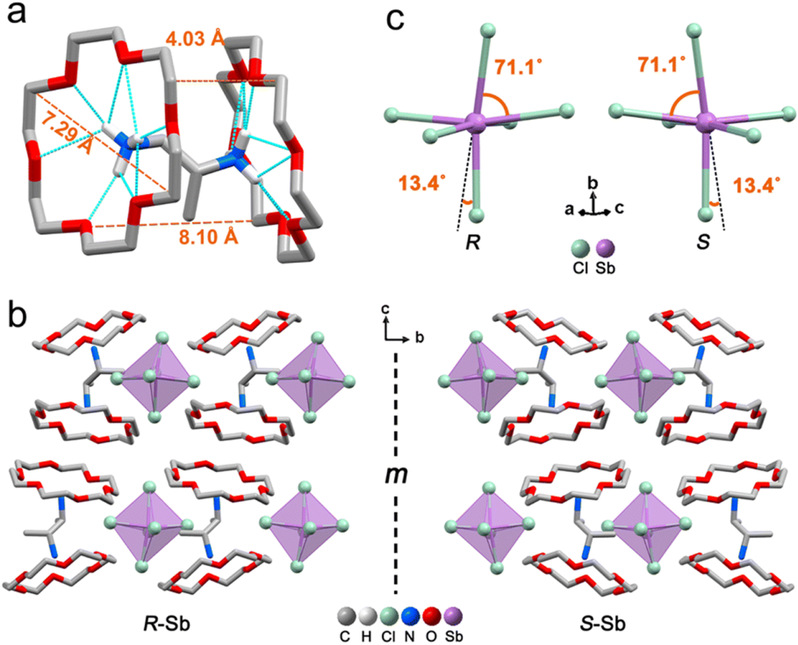
Fig. 1 Single-crystal structures of the chiral 0D antimony halides. (a) The structure of the [R-PPD(18-crown-6)2]2+ cation, showing host–guest interactions, size of 18-crown-6 (7.29 Å), longest distance (8.10 Å) and shortest distance (4.03 Å) between the two adjacent 18-crown-6 molecules. (b) Structural models of R-Sb and S-Sb (hydrogen atoms are omitted for clarity, m represents mirror plane). (c) Inorganic scaffold in R-/S-Sb.
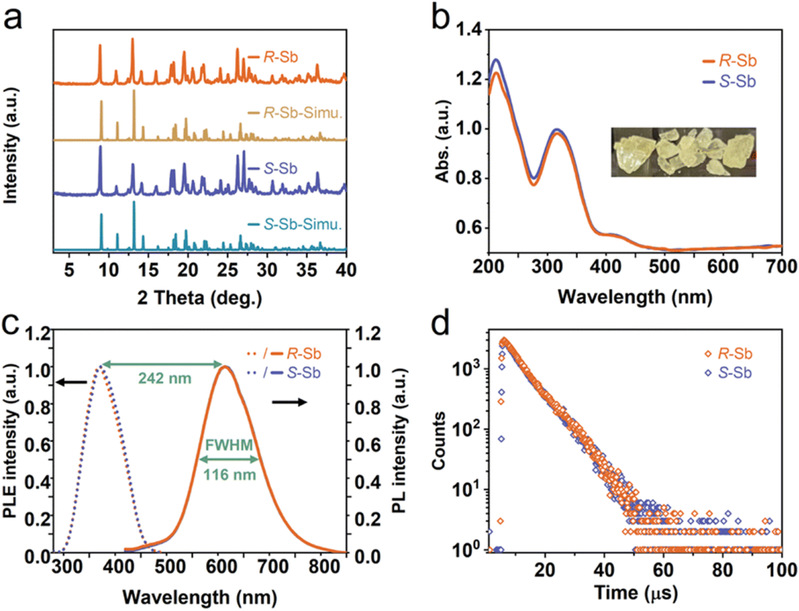
Fig. 2 Characterization of chiral 0D antimony halides.(a) PXRD patterns and (b) UV-vis absorption spectra of R-/S-Sb. Inset: optical image of R-Sb crystals under the radiation of natural light. (c) Normalized PL excitation (PLE), PL spectra and (d) time-resolved PL decay spectra of R-/S-Sb at 612 nm
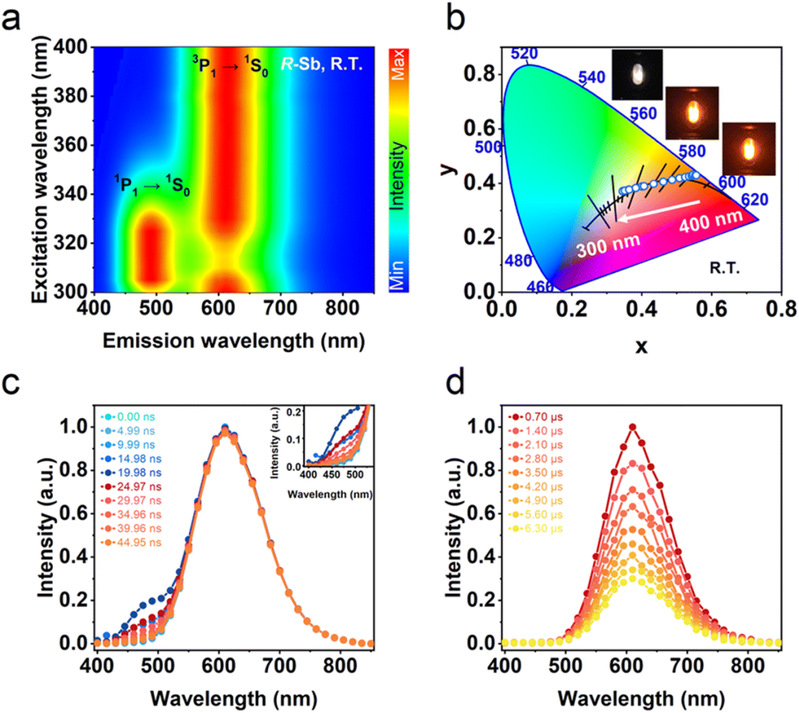
Fig. 3 Excitation wavelength-dependent PL properties of R-Sb. (a) Excitation–emission mapping patterns of R-Sb under ambient conditions. (b) The corresponding CIE chromaticity coordinates at different excitation wavelengths. Insets: luminescence photographs at excitation wavelengths of 300 nm (left), 360 nm (medium), and 380 nm (right). (c) and (d) Time-resolved emission spectra for R-Sb at the excitation wavelength of 365 nm. Note that t = 0 μs (t = 6.0 μs) represents the start (end) of the excitation pulse and that the emission intensity reached its maximum at t = 6.0 μs.
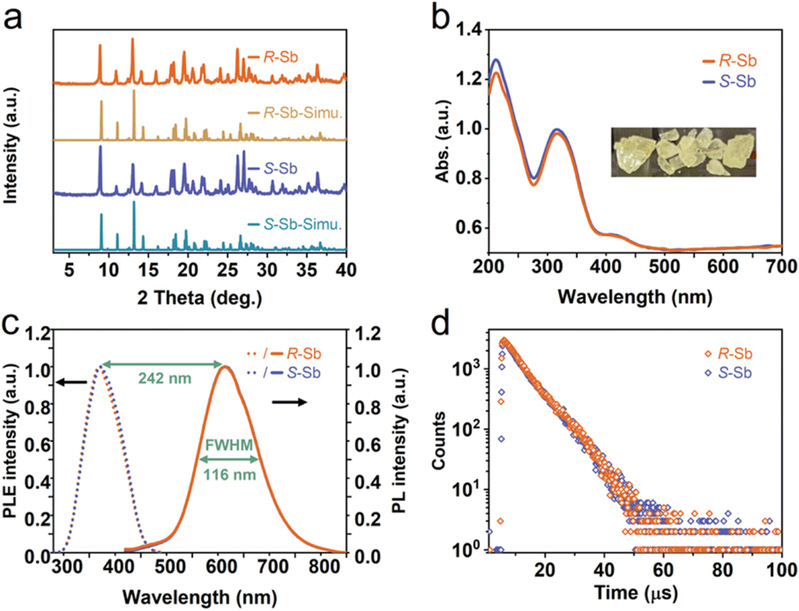
Fig. 4 Temperature-dependent PL measurements of R-Sb. (a) Temperature-dependent PL spectra (λex = 320 nm) and (b) decay PL spectra (λex = 300 nm) for R-Sb; (c) temperature-dependent PL spectra (λex = 370 nm) and (d) decay PL spectra (λex = 370 nm) for R-Sb. Inset: its partial amplification diagram from 6 to 14 μs.

Fig. 5 Chiroptical properties of R-/S-Sb. (a) CD spectra, (b) CPL emission spectra, and the corresponding (c) gCD factor and (d) glum factor of R-/S-Sb.
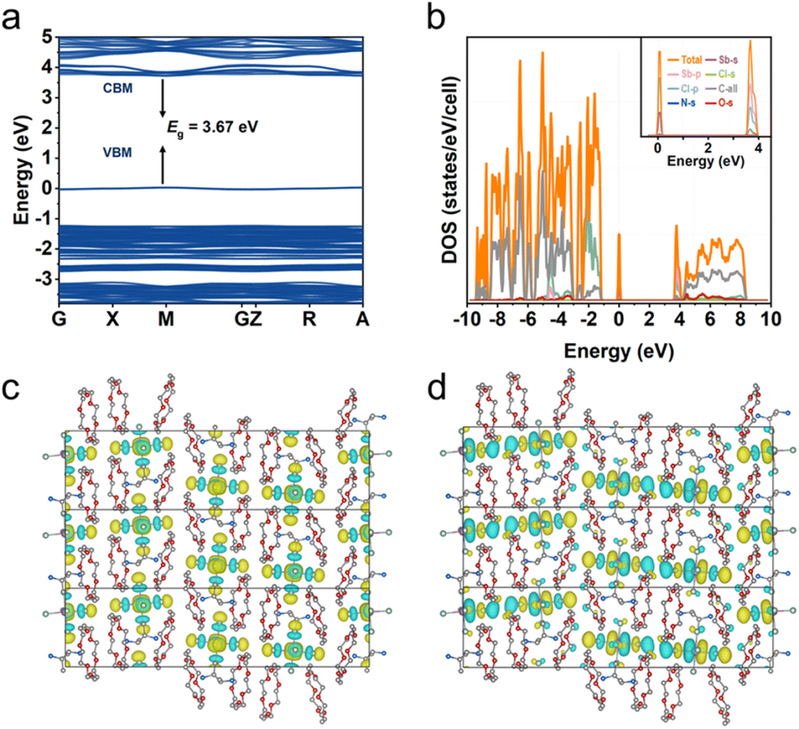
Fig. 6 DFT simulation of R-Sb. (a) Calculated band structure and (b) the corresponding PDOS for R-Sb. (c) The conduction band minimum (CBM) and (d) valence band maximum (VBM) of R-Sb.
文章信息
期刊:Chemical Science
题目:Multi-stimuli-responsive luminescence enabled by crown ether anchored chiral antimony halide phosphors
作者:Xiao Han, Puxin Cheng, Shanshan Han, Zhihua Wang, Junjie Guan, Wenqing Han, Rongchao Shi, Songhua Chen, Yongshen Zheng*, Jialiang Xu*(徐加良,南开大学)and Xian-He Bu
接受日期: 1 Febrary 2024
原文链接:https://doi.org/10.1039/D3SC06362C
